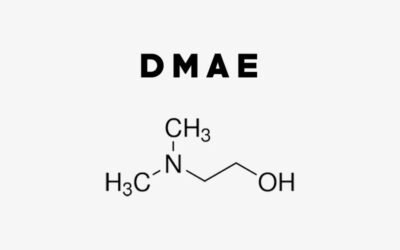Here’s a Quick Guide on How to Get a V-shaped Back
A well-developed back enhances aesthetics and is crucial to upper body strength and functionality. Among the major muscles in your back, the lats (latissimus dorsi) are the ones that provide that sought-after V-shaped appearance. Building bigger and stronger lats requires a targeted and comprehensive approach that includes specific exercises, proper form, nutrition, and recovery. This educative article explores everything you need to know to develop impressive lats and create a V-Shaped back that commands attention.

Understanding the Lats: Anatomy and Function
Before diving into the workout strategies, it’s essential to understand the anatomy and function of the lats. The latissimus dorsi is a large, fan-shaped muscle that originates from the lower back, thoracic spine, and iliac crest and inserts into the upper arm (humerus). Its primary function is to bring the arm down from an overhead position towards the body and extend, adduct, and internally rotate the arm.
In other words, the latissimus dorsi muscles are big muscles spanning the lumbar region to the upper arm. They are accountable for executing movements involving the downward pulling of the components from an elevated position, drawing them nearer to the body, and engaging in exercises that involve pulling actions.
Nonetheless, let’s find out what exercises you need to do and how to get that V-Shaped back.
Compound Exercises for Lat Development
Incorporating compound exercises into your training routine is paramount to targeting the lats effectively. Compound movements simultaneously engage multiple muscle groups, leading to greater activation and growth. Here are some of the best compound exercises for building bigger and stronger lats:
- Pull-Ups/Chin-Ups: These classic bodyweight exercises are unparalleled for lat development. Pull-ups target the lats, while chin-ups engage the lats and biceps. Incorporate diverse grip variations, such as wide, narrow, and underhand grips, to effectively target the latissimus dorsi muscles from multiple angles.
- Bent-Over Rows: Bent-over rows, performed with a barbell, dumbbells, or a cable machine, effectively engage the latissimus dorsi, rhomboids, and trapezius muscles.
- Lat Pulldowns: Lat pulldowns are a suitable substitute for pull-ups as they adjust resistance and grip width, enabling effective targeting of the latissimus dorsi muscles.
- Deadlifts: Deadlifts primarily focus on the posterior chain but involve substantial lats activation during the lifting phase.
Further, to enhance the development of your latissimus dorsi muscles A.K.A. V-Shaped back, it is recommended to include compound exercises in your back training regimen. These exercises contribute to the growth and strength of your lats.
Further, it’s recommended to maintain proper form, activating the latissimus dorsi muscles throughout the activities and gradually increasing the weight to stimulate muscle growth effectively. It’s also important that you warm up properly, pay attention to your body, and seek guidance from a fitness expert if necessary to ensure safe and effective exercise performance.
Isolation Exercises for Targeted Lat Activation
Incorporating isolation and compound exercises can improve lat activation and promote targeted lat development. For developing a well-defined and aesthetically pleasing V-Shaped back, it’s essential to prioritize activating the latissimus dorsi muscles. Pull-ups and rows are compound exercises that effectively target the entire back musculature.
And isolation exercises are crucial for targeting the latissimus dorsi muscles and attaining a desired V-shaped physique.
Let’s explore the benefits of isolation exercises in activating the lat muscles and provides a range of effective practices to improve the development of back muscles. Here, below are the following activities that are effective for isolating specific muscle groups:
- Straight-Arm Pulldowns: This exercise specifically engages the latissimus dorsi muscles by keeping the arms straight throughout the movement. Highlight the contraction of the latissimus dorsi muscles during the eccentric phase of the training.
- Seated Cable Rows: Seated cable rows primarily target the middle back, but adjusting hand placement and keeping the elbows wide can increase activation of the latissimus dorsi muscles.
- Dumbbell Pullovers: Dumbbell pullovers effectively stretch and activate the latissimus dorsi muscles. Perform the exercises with controlled and intentional movements, ensuring you feel a stretching sensation in your latissimus dorsi muscles at the bottom of the motion.
- Single-Arm Cable Pulldowns: These exercises isolate and target individual latissimus dorsi muscles, facilitating specific and well-rounded training of the latissimus dorsi.
Achieving Proper Form
A well-developed back, characterized by wide and powerful latissimus dorsi muscles, improves physical appearance and significantly contributes to upper body strength and functionality. However, proper form is essential for fully activating and engaging the latissimus dorsi (lats). Proper form in back exercises helps individuals optimize their back strength and attain the desired V-shaped back physique.
Comprehending the latissimus dorsi with proper form is crucial as it plays a significant role in the back’s development. Here are some recommendations to consider when performing back exercises with proper form:
- Engage Your Lats: Emphasize the activation of the latissimus dorsi muscles rather than relying predominantly on the involvement of the arms or other muscle groups. Consider retracting and depressing the elbows to enhance lat activation during pulling exercises.
- Full Range of Motion: Strive to achieve a complete range of motion during exercise. In pull-ups, initiate the movement from a full extension position, with arms straight, and elevate the body until the chin surpasses the bar or as much you can if you’re a beginner or not able to do pull-ups due to any reasons.
- Controlled Movement: Refraining from using momentum or swinging movements while performing exercises is recommended. Maintain controlled execution of each repetition to ensure consistent tension on the latissimus dorsi muscles throughout the entire range of motion.
- Mind-Muscle Connection: Enhance the mind-muscle connection with the latissimus dorsi muscles. Emphasize the sensation of stretching and contracting of your back muscles during each exercise.
Reps and Sets for Lat Growth
The appropriate combination of repetitions and sets is crucial in developing a robust and visually striking back, particularly with a well-developed V-shaped back. Optimal muscle hypertrophy necessitates a strategic approach that effectively balances intensity and volume during growth.
The ideal repetition and set range for lat muscle growth can differ depending on individual factors, training experience, and goals. A typical strategy for inducing hypertrophy (muscle growth) involves executing 3-4 sets of 8-12 repetitions for compound exercises and 3-4 sets of 10-15 repetitions for isolation exercises. Conduct experiments utilizing various repetition ranges to determine the most effective approach for your needs.
The Importance of Progressive Overload
Progressive overload is crucial for the continuous growth of the latissimus dorsi muscles. Progressive overload is the gradual augmentation of resistance, volume, or intensity in one’s exercise regimen over time. Progressive overload, achieved through increasing weight, repetitions, or improving form, is essential for muscle growth as it provides ongoing challenges to the muscles.
5 Steps for Developing an Optimal V-shaped Back
A well-developed back enhances upper body strength and performance, improving one’s physique. Creating an appropriately structured back workout regimen is essential for effectively targeting the various muscles in the back, specifically the latissimus dorsi (lats), which play a significant role in achieving the desired V-shaped back.
Step 1: Prioritize Compound Exercises
Compound exercises are crucial for an effective back training routine. Multi-joint movements elicit activation of multiple muscle groups, including the latissimus dorsi, thereby promoting optimal muscle activation and hypertrophy. To develop a strong back, it is recommended to incorporate exercises such as pull-ups, chin-ups, bent-over rows, and deadlifts into your exercise routine.
Step 2: Incorporate Isolation Exercises
Compound exercises are essential for overall back development, while isolation exercises are crucial in refining and enhancing specific areas of the back. Isolation exercises allow focused targeting of the latissimus dorsi muscles and promote establishing a strong neural connection between the mind and the muscles. To optimize lat activation and foster muscle symmetry, you should include exercises like straight-arm pulldowns, dumbbell pullovers, and seated cable rows in your workout routine.
Step 3: Identify Repetition & Sets That Are Effective for You
The repetition and set range for a back workout routine should be determined based on individual goals and training experience. It is advisable to perform 8 to 12 repetitions per set to promote muscle hypertrophy. Serving 3 to 4 groups for each exercise is recommended to stimulate the muscles sufficiently. To optimize strength gains during workouts, it is recommended to prioritize lower repetitions (4 to 6) using heavier weights and aim to perform 4 to 6 sets for each exercise.
Step 4: Emphasize Correct Technique
Maintaining proper form is crucial for maximizing the effectiveness of back exercises and reducing the likelihood of injuries. Maintaining good posture, engaging the latissimus dorsi muscles throughout movements, and avoiding momentum is crucial for effective exercise execution. For instance, focusing on the contraction of the scapulae is effective during pulling exercises.
Step 5: Embrace Progressive Overload
Adopting the principle of progressive overload is essential to ensure your back’s continuous growth and development. As strength improves, it is advisable to progressively increase either the weight lifted or the number of repetitions performed. Progressive overload is a method that stimulates muscle growth and promotes continuous progress in the development of your back muscles.
Sample Back Workout Routine
Here is a sample back workout routine incorporating compound and isolation exercises to optimize lat activation.
- Pull-Ups: 4 sets x 8-10 reps
- Bent-Over Rows (Barbell or Dumbbell): 3 sets x 10-12 reps
- Lat Pulldowns: 3 sets x 12-15 reps
- Straight-Arm Pulldowns: 3 sets x 12-15 reps
- Dumbbell Pullovers: 3 sets x 10-12 reps
Conclusion
Developing a successful back workout regimen is crucial for maximizing the strength and aesthetic appeal of your latissimus dorsi muscles, resulting in a well-defined, visually & aesthetically pleasing back. It’s recommended to prioritize compound exercises involving multiple muscle groups, incorporate isolation exercises to activate the lat muscles, and emphasize proper form and progressive overload.
Similarly, consistency and dedication are crucial factors in achieving a well-developed back. Adopting this comprehensive approach will effectively demonstrate a well-developed V-shaped back that is impressive and memorable. Have a productive lifting session!








